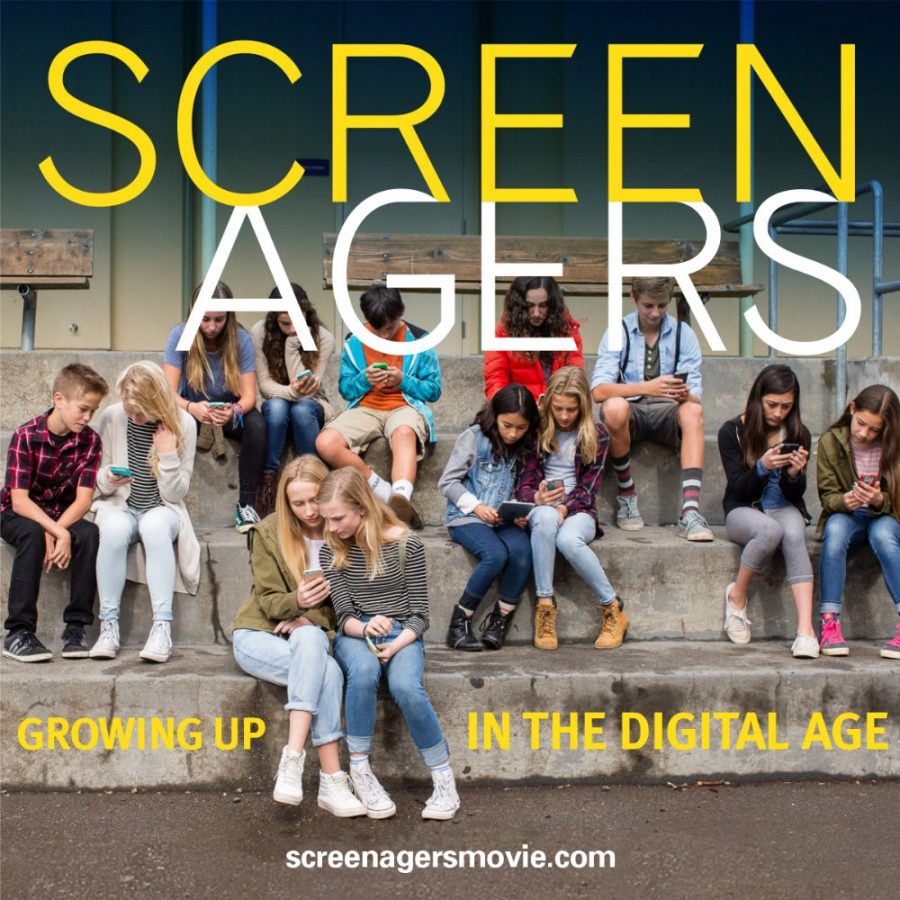Screenagers searches for a healthy balance with screen time
April 10, 2017
Imagine walking into a room crowded with strangers. Despite the large number of people, no chatter from light-hearted conversations can be heard, and the place is oddly silent. Instead, a blue artificial light glows on each person’s face as they stare into an screen, ignoring the world around them.
In a world where electronic devices are so common, it’s hard to think of a time where they did not play such a prominent role in our everyday lives. While this technology has improved different aspects of our daily lives, from education to information transfer, there’s a fine line between just enough and too much screen time.
On Wed., Apr. 5, Woodson High School held a free viewing of the documentary, Screenagers, to address this issue. Directed by Dr. Delaney Ruston, the film follows Ruston and her family through their journey in finding that delicate balance with screen usage.
Screenagers features several stories of different families’ struggles with the impacts of technology, from a young man who flunked out of college because of his video game addiction, to a teenage girl whose bra selfie was spread across her school. Ruston moves through issues such as the effects of violent video games on the brain and social media’s impact on relationships. Each story teaches the viewer a lesson and adds to the question of “How much is too much screen time?”
Personally, I found many of the struggles highlighted in the film were issues that my own family and friends have also experienced. Too often have I found simple tasks taking much longer than usual because I procrastinated or attempted to multitask by texting or using social media at the same time. Even when I don’t have work to do, I find myself always staring into a screen, rarely taking a break to socialize or even walk around. Because of this, watching Screenagers really made me start questioning the amount of time I spend on my electronic devices every day.
One such example of the negative impacts of screen use on relationships and face-to-face contact with strangers occurred, ironically, right before the viewing of Screenagers. In the auditorium waiting for the film to start playing, everyone around me had their phones out texting, playing games, and scrolling through their social medias, myself included. Very few people among the large crowd waiting were actually conversing with each other and most used their devices as an excuse to avoid the awkwardness that comes with meeting new people.
Jefferson is no exception to the described scenario, as electronic devices can be found in almost every student’s hand throughout the school day. Even with the cell phone policy in place, it’s apparent that electronic devices still distract from the learning environment and impact social development in children and teens. With the constant presence of phones in the classroom, students tend to lack self-control in focusing completely on their teachers and resisting the temptation to pick up the phones on their desks. This detracts from their learning, and in many cases, students turn to tutoring and self-studying to make up for the damage done.
Screenagers combines science, statistics, and first-hand experiences to send across the central message of using digital devices with moderation. Although I did find some parts of the film dry and dull due to the heavy use of facts and figures, for the most part, there were many thought-provoking and informative scenes that really connected with the audience. In addition, Ruston poses as a relatable character throughout her journey of battling digital distractions in her family, and the steps she took to solve these struggles can be taken by other families fighting similar problems as well.
Overall, Screenagers is a well-put-together documentary that inspires viewers to take action against screen addiction in the digital age and leaves them wondering, “How can I find that healthy balance with screen time?”






